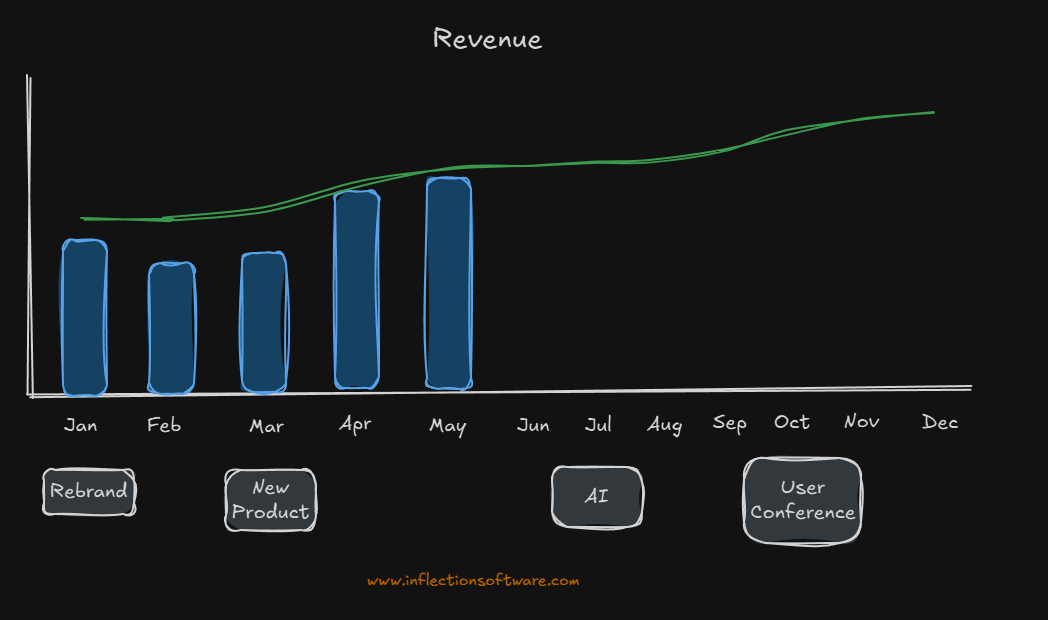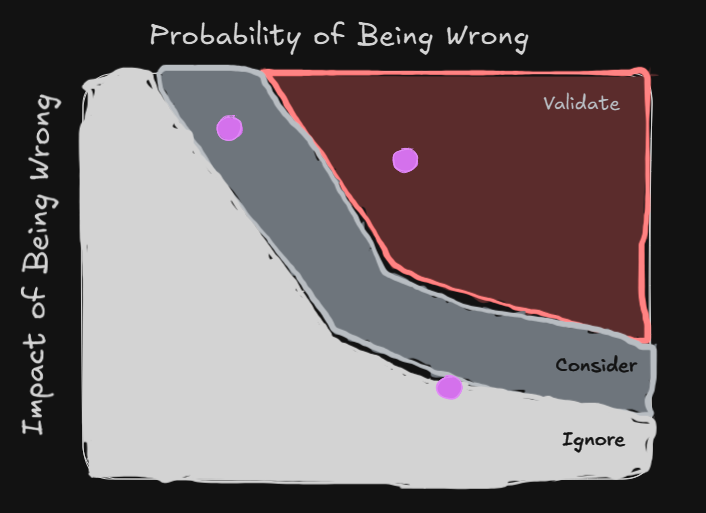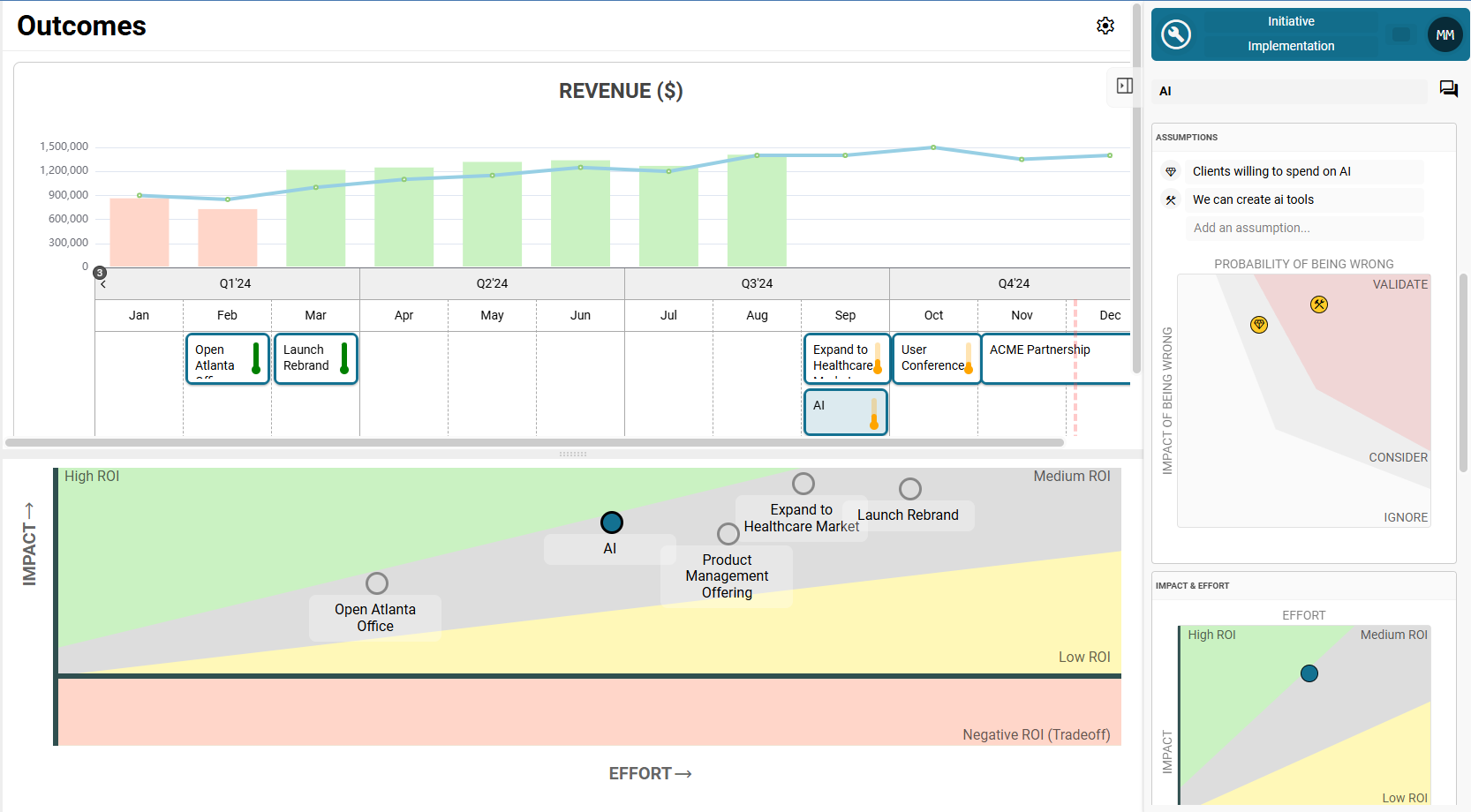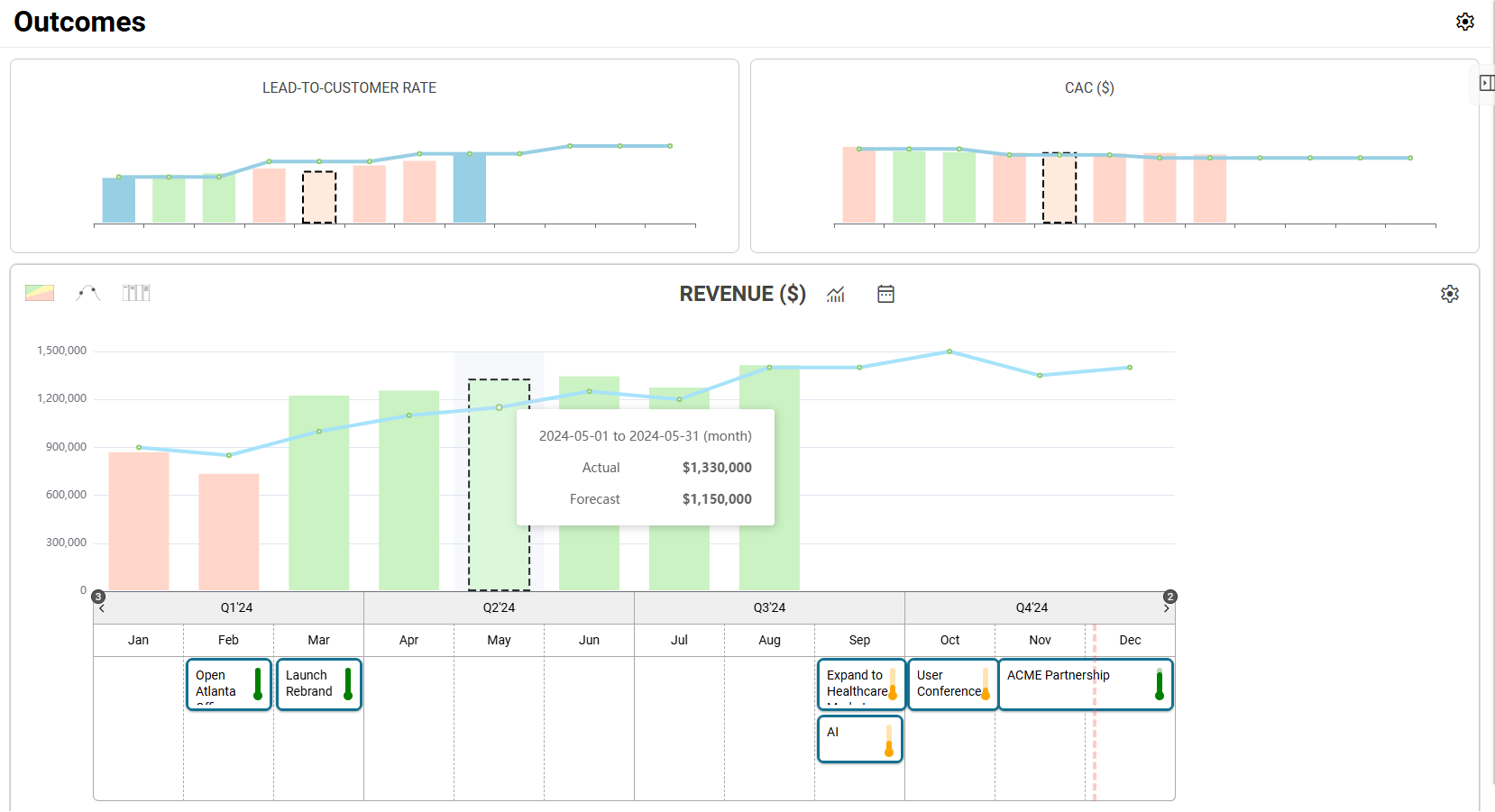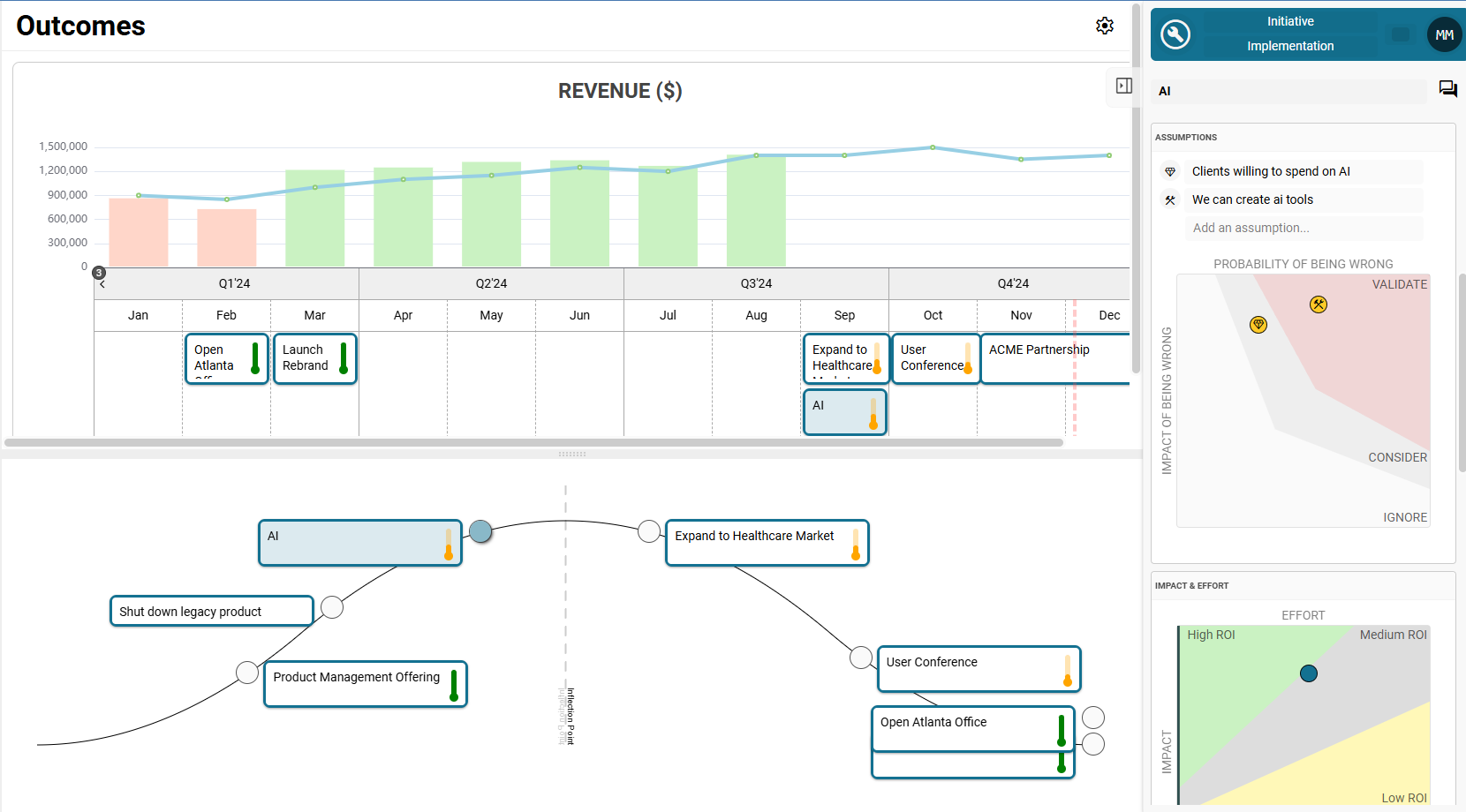For your team to be truly aligned, you must understand each other’s assumptions.
People make trade-off decisions every single day. One big trade-off or a series of minor trade-offs that deviate undermine the outcome of all the work.
Your team must make trade-off decisions that are truly aligned.
Alignment Starts with Why
Here, revenue outcomes are tied to initiatives by month, such as rebranding, new products, AI, and a user conference.
Alignment for work, assumptions, and trade-off decisions starts with clearly defined desired outcomes. Tying your initiatives to the outcomes they should impact aligns the team on the “why.”
Customer retention is aligned with a rebrand, chat support, creating communities, publishing training videos, and the user conference.
Continues with healthy debate about assumptions
Once the initiatives are tied to outcomes, the team can debate the relative ROI of each initiative toward its given outcome.
When someone says why they think initiative A has a higher ROI than initiative B, they start sharing their assumptions.
Creates opportunities for the team to learn together
You capture each assumption and plot the Impact and Probability of being wrong.
This puts each assumption into one of three categories:
Validate
Consider Validating
Ignore
The team can debate the risk each assumption poses to the initiative, and ultimately, the outcome.
Promotes Transparent Progress
Now the team is truly aligned and has also defined a structured learning phase for the initiative that can be tracked on a hill chart.
The team moves the initiative up the hill as they complete experiments like customer surveys and proofs of concept to validate key assumptions.
How we do it.
Inflection Point drives alignment
Resources
Align desired outcomes to work and show progress
Process that creates alignment



